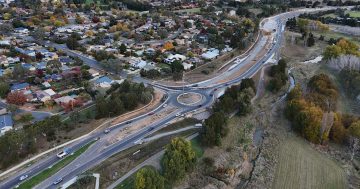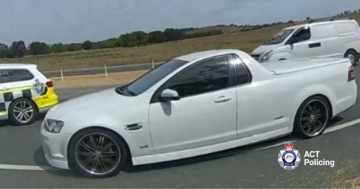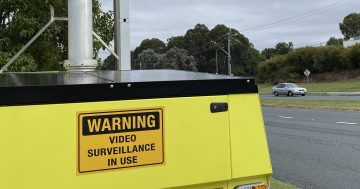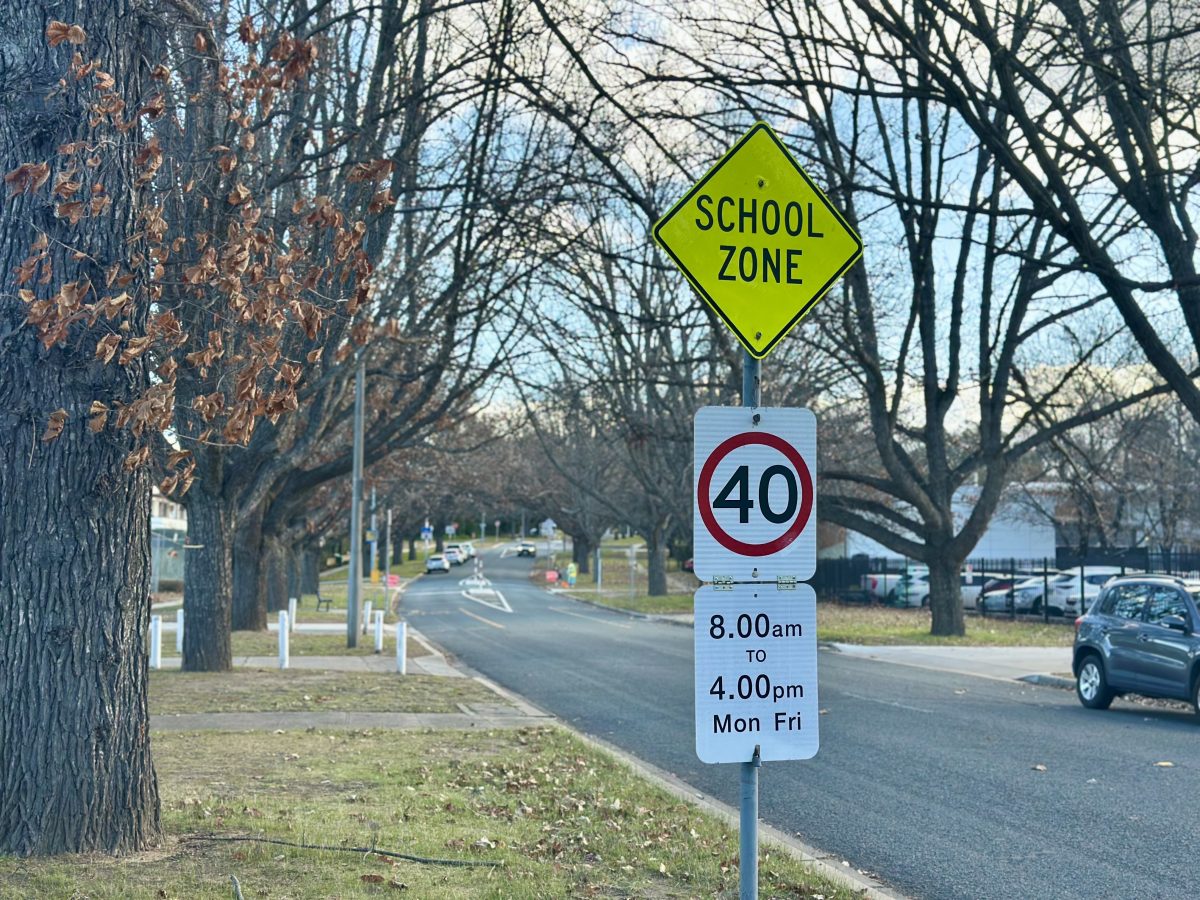
A 40 km/h school zone on National Circuit – or should that be 30 km/h? Photo: James Coleman.
The ACT’s peak body for school parents has criticised a recommendation that the government should reduce the ACT’s school-zone speed limit from 40 km/h to 30 km/h, while also extending the hours to between 7 am and 5 pm, saying “it won’t solve the problem”.
The ACT Council of Parents and Citizens Associations argues the move could be a distraction from the real dangers posed in local school zones.
“Council absolutely supports making school zones safer – that’s non-negotiable,” president Liane Joubert told Region.
“But simply changing a number on a sign is not enough if it’s not backed up by visible enforcement and smarter road design.
“Every school day, we see people making risky decisions around our children – not just speeding, but stopping in the wrong places, doing U-turns, and using phones while driving … These are the real threats, and they persist even under reduced speed limits.
“We’re concerned that a lower limit, without proper resourcing, could shift attention away from practical, immediate safety improvements that children need right now.”
What’s the problem?
In 2023, the ACT Government awarded $29,425 in grant funding to the University of Adelaide’s Centre of Automotive Safety Research (CASR) to “examine vehicle speeds through ACT school zones”, with an eye to improving local practices.
Using data from ACT Government speed surveys conducted between 2015 and 2023 on roads near 59 schools, the researchers found nearly a third (31 per cent) of motorists sped through school zones with a default limit of 50 km/h, and nearly half (45 per cent) sped through zones with a default limit of 60 km/h.
Based on these findings – and different school zone safety practices in other parts of Australia – their report made a number of recommendations:
- Lowering the speed limit in ACT school zones to 30 km/h “or less”
- Extending the active school zone time period to 7 am to 5 pm (up from today’s 8 am to 4 pm)
- Making the default speed limit on the approach to ACT school zones a maximum of 50 km/h
- Installing “safe-crossing” facilities in all school zones
- Installing “traffic-calming measures” like speed bumps and narrower lane widths in school zones.
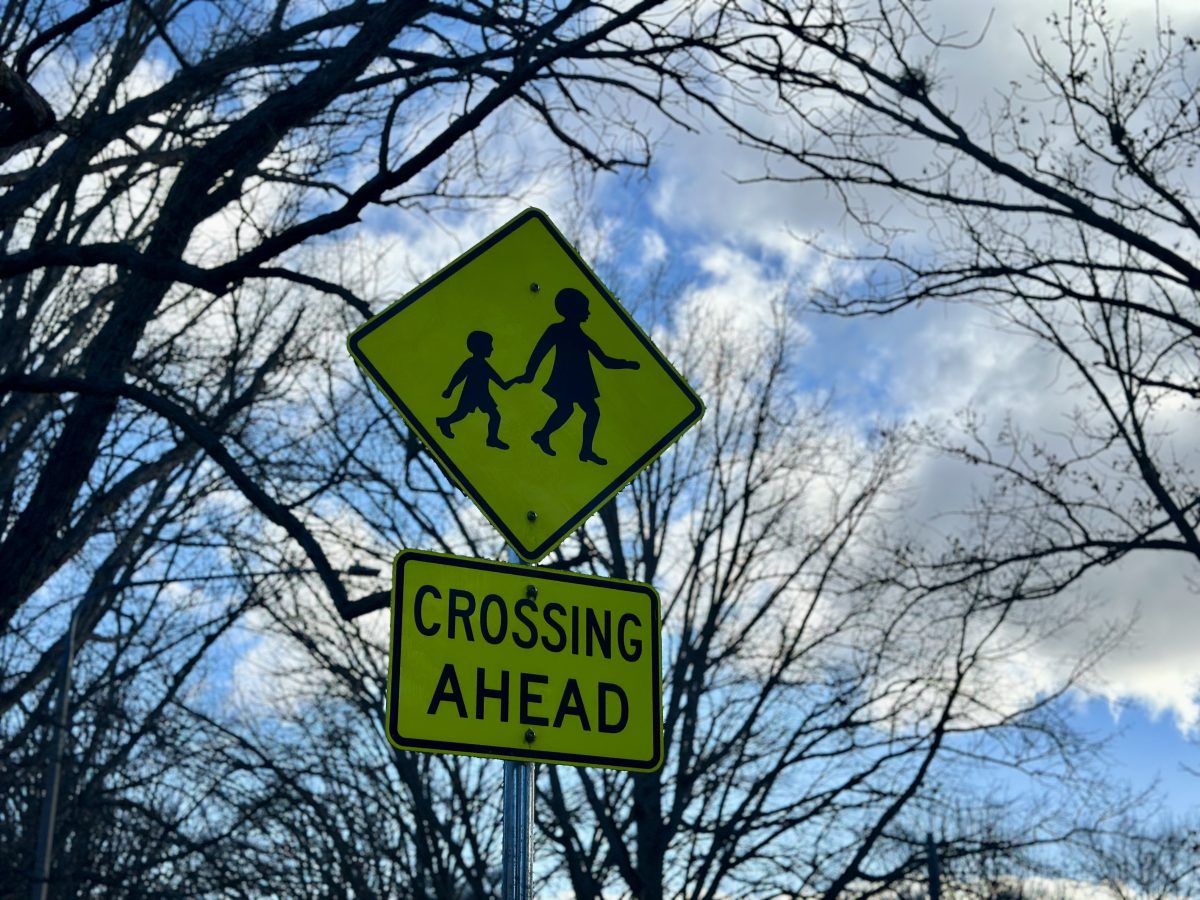
On average, accidents at school crossings account for 0.05 per cent of the ACT’s annual total crashes. Photo: James Coleman.
“Reducing the speed at which vehicles travel through school zones is crucial to protect vulnerable road users around schools,” the report concludes.
“Higher vehicle speeds increase the risk of collisions, as well as the severity of the resulting injuries.”
At the same time, an online petition has been launched by independent MLA Thomas Emerson, calling on the government to pilot 30 km/h speed limits on several streets in Lyneham.
The petition’s 52 signatories (as of 17 June) argue this will make the streets safer and “more welcoming” for pedestrians and cyclists, bring more activity to local shops and cafes, and lower pollution levels.
“The ACT is one of the last Australian jurisdictions to try this initiative. Similar pilots in Australia have proven successful, such as the City of Yarra in Victoria. Let’s give it a go,” it reads.
How big a problem is school-zone speeding in the ACT?
Data from ACT Policing reveals 97 motorists were issued traffic infringement notices between January and May this year for exceeding the speed limit in a school zone by up to 15 km/h. A further 41 drivers were given tickets for exceeding the speed limit by 15 to 30 km/h, while 20 drivers received cautions.
Over 2024, 121 drivers were caught speeding through school zones by up to 15 km/h, 45 drivers by between 15 and 30 km/h, three drivers by between 30 and 45 km/h and one by more than 45 km/h. Another 61 drivers were cautioned.
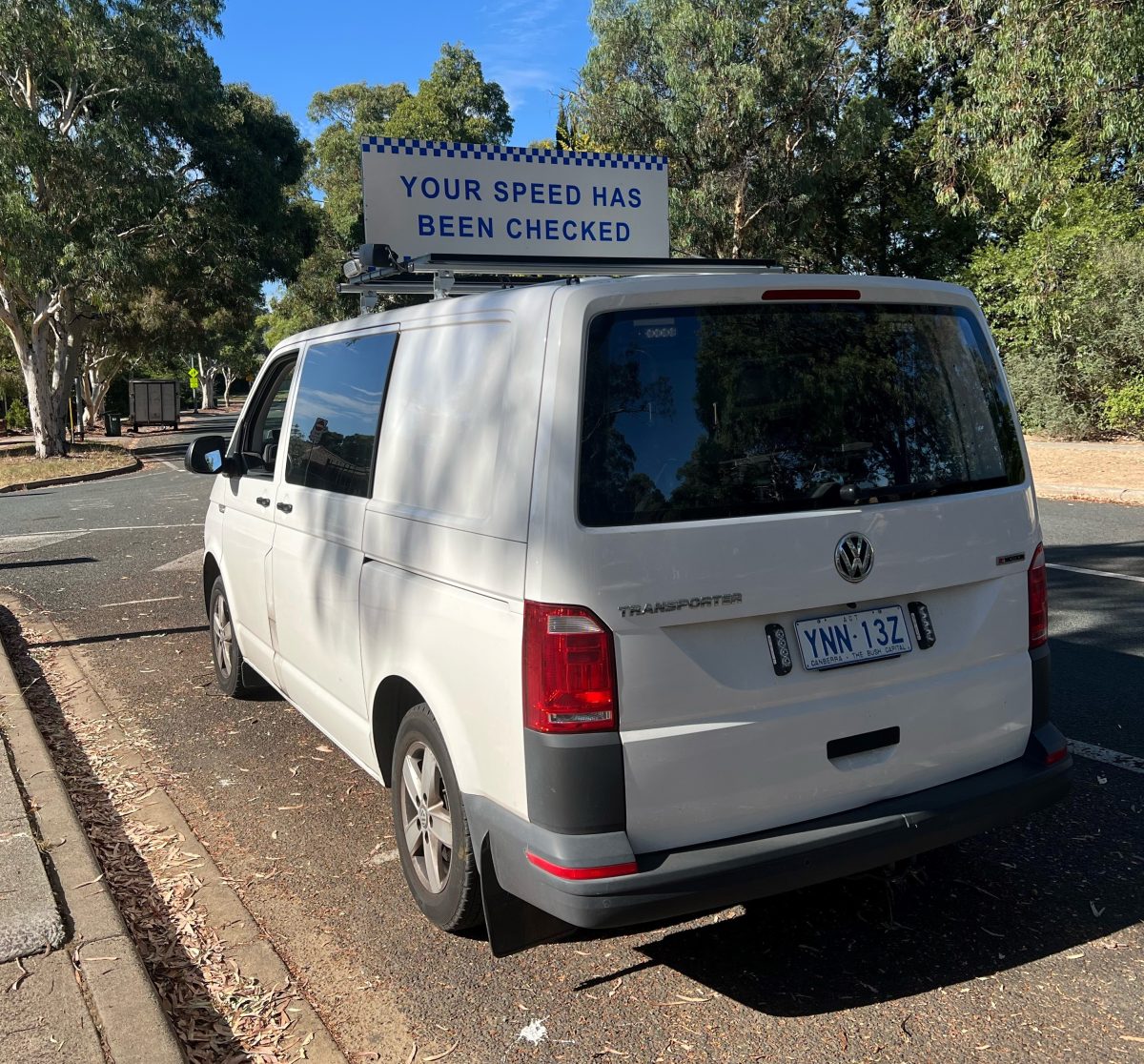
These mobile speed cameras caught 24,558 drivers speeding through school zones between January 2022 and May 2025. Photo: ACT Government.
Meanwhile, the government’s fleet of mobile speed camera vans has caught 2418 drivers speeding in school zones so far this year, the vast majority by up to 15 km/h (2219).
In 2024, the vans captured 7230 motorists speeding in school zones, with 6,644 exceeding the speed limit by up to 15 km/h.
Between 1 January 2022 and 31 May 2025, these mobile speed cameras checked a total of 335,227 vehicles in ACT school zones, with 24,558 caught speeding (7.3 per cent).
Annual crash reports published by the ACT Government also reveal that there were 32 accidents at local school crossings between 2015 and 2023 – the same years covered by CASR’s research.
Of these, 25 crashes resulted in property damage, and seven involved injuries to either a driver or a pedestrian. No fatalities were recorded.
On average, accidents at school crossings account for 0.05 per cent of the ACT’s annual total crashes.
Would lower speed limits help?
The University of Adelaide’s researchers admit “drivers may not comply with lower speed limits”, in much the same way as they don’t with the current 40 km/h zones. It’s why they also recommended “traffic-calming measures, such as speed bumps, school crossings and perceived narrow lane widths” to further reduce vehicle speeds.
The ACT Council of Parents and Citizens Associations agrees that lower limits aren’t enough.
“We want to see stronger enforcement of existing laws, clearer signage, safe crossing points and traffic-calming measures designed with children’s needs in mind,” Ms Joubert told Region.
“One area where we do see potential for clearer regulation is U-turns. In many other jurisdictions, they’re banned in school zones because of the dangers they pose. We’d like to see that introduced here in the ACT.”
The council also questioned the need for longer school-zone hours.
“In most cases, children attending before and after school care are signed in and out by an adult. That means they’re not typically crossing roads near the school on their own during those extended periods.”
What’s next?
The ACT Government has said it “welcomes the research” by CASR and “will consider future actions as part of the current development of the next ACT Road Safety Strategy”.
This new strategy document is due next year.
Original Article published by James Coleman on Region Canberra.





